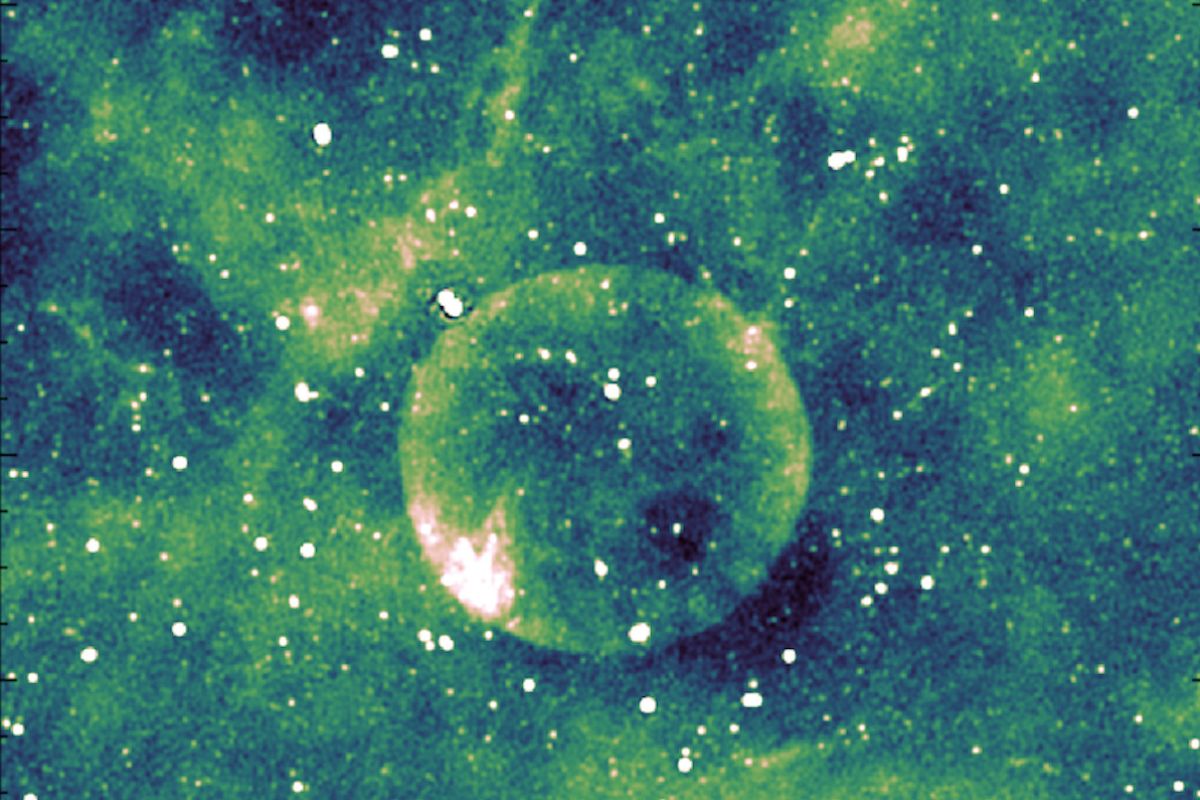Show table of content Hide table of content
The Australian SKA Pathfinder Telescope recently discovered a celestial object with an almost perfect spherical shape. The scientific community has never been confronted with such an observation.
Space has certainly not finished revealing its mysteries. This time, it’s the Australian radio telescope ASKAP – for Australian Square Kilometer Array Pathfinder – that is reminding us, by unveiling its latest observation: an object in the Milky Way whose most disturbing feature is that it is almost perfectly spherical.
This astonishing object, catalogued as G305.4-2.2, was quickly nicknamed Teleios by scientists: a Greek word meaning “perfection”. This gigantic bubble of plasma floating in space appears only in the radio spectrum, with no trace in visible light, infrared or X-rays.
Space 4.5 billion years ago, Jupiter was 2.5 times its current size, scientists discover.
Normally, a supernova aftereffect looks like a frizzy shell, because the stellar explosion and the interstellar environment are never uniform. But Teleios is more than 95% round, making it, according to the scientific community, the first “perfect radio circle” to be detected within the Milky Way galaxy.
A discovery that is unsettling astronomers
Teleios is very faint, and this does not make the task of studying it any easier for scientists. In particular, they are unable to agree on the distance separating the star from Earth – 2,200 or 7,700 light years? – or its diameter – 14 or 47 light years? – and, as a result, dating the star is also complicated: “There are two possible scenarios, either it is a young supernova afterglow (less than 1,000 years old) or an older one (more than 10,000 years old)”, says the research report published on 7 May.
Similarly, there are many theories about the origin of Teleios. One of the most likely hypotheses is that of a “type Ia supernova aftereffect”: in this context, an ultra-symmetric white dwarf explosion in an empty space environment would have left behind a neatly sculpted sphere. But current studies are not enough to definitively validate this hypothesis: “Unfortunately, all the scenarios examined present challenges, and no definitive type of supernova origin can be established at this stage”, explains the article.
The scientific community continues to investigate
Firstly, Teleios does not emit X-rays, which it should if it were really a supernova aftereffect. Secondly, when a massive star explodes, it generally leaves behind a dense core, such as a neutron star or black hole. Astronomers have not detected anything of the sort. Finally, there is no historical record of a supernova in this part of the sky, which means that if the object is young, its explosion would have gone completely unnoticed from Earth.
News This TikToker buys a used van and realizes it has a hidden surveillance device.
The Square Kilometre Array, Australia’s new radio telescope due to come into operation in the next few years, could well help them to see more clearly in the darkness of space.


